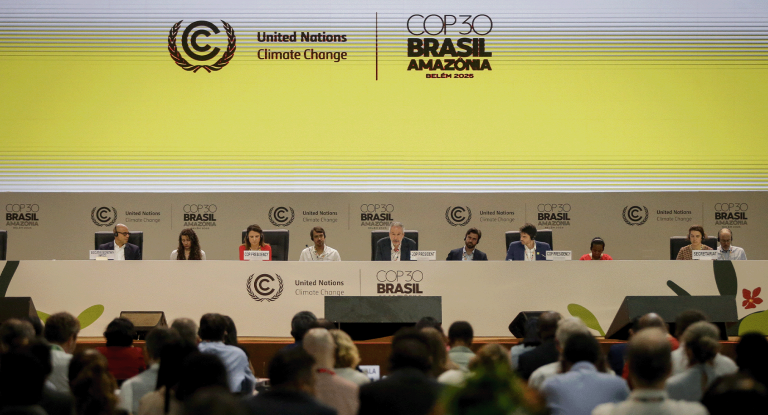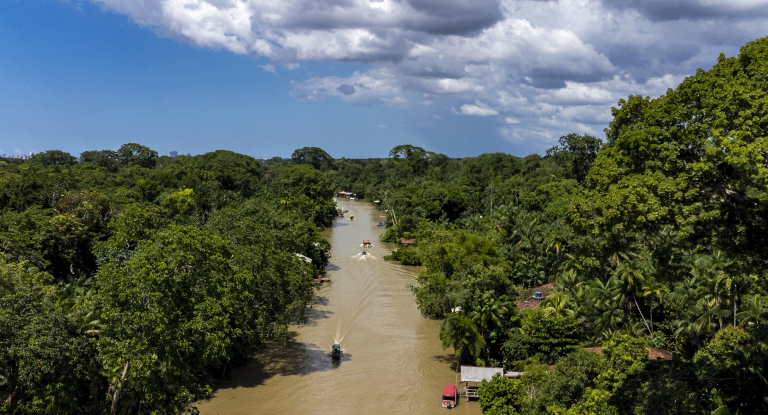Resumption of the Biodiversity COP: main decisions

The United Nations Conference on Biodiversity, COP16, held in Cali, Colombia, last year, resumed between February 25 and 27, 2025 in Rome, Italy, at the headquarters of the Food and Agriculture Organization of the United Nations (FAO). The parties sought an understanding on issues that did not reach consensus in Cali, including the mobilization of resources and the conversion of the Kunming-Montreal Global Biodiversity Framework (GBF) targets into tangible actions.
In short, as at the Climate Conference, the great challenge is to define who will bear the necessary investments for the conservation of the planet’s ecosystems. WayCarbon was present at the 2024 forum, following the discussion and participating in panels. The representatives were Henrique Pereira, COO, and Carlos Eduardo Benfica, Sustainability Consultant.
At the February meeting, the parties sought a new strategy for mobilizing resources, with the goal of securing US$ 200 billion annually by 2030 for biodiversity initiatives. The parties also discussed the establishment of a global financing instrument for this agenda, designed to mobilize and distribute funds effectively, as reported on the official website of the Secretariat of the Convention on Biological Diversity.
Highlights of the Biodiversity COP
On Tuesday, the first day of the event, the Cali Fund was formally presented, an instrument created to guarantee the sharing of financial benefits from the exploitation of biodiversity genetic resources by the private sector. The aim is for the funds to provide a new source of resources for the protection of biological diversity, with the participation of the private sector. The COP secretariat said in a press conference that it is in advanced discussions with companies from various jurisdictions, including the United States, in search of solid commitments on the issue.
Updates
The event concluded on Thursday, when the Parties agreed on a strategy to close the global biodiversity funding gap and achieve the action targets of the Kunming-Montreal Global Biodiversity Framework (KMGBF). The information is from the Convention’s official website. The decision included “a commitment to establish permanent arrangements for the financial mechanism in accordance with Articles 21 and 39 of the Convention and, at the same time, to work to improve existing financial instruments”. As part of the decision, the principles and steps that will shape the evolution of existing financial instruments and others that may be created were described.
A resource mobilization strategy was also adopted that identifies various instruments, mechanisms and institutions that could be used to mobilize the funds needed to implement the Kunming-Montreal Global Biodiversity Framework. The strategy involves “public funding from national and sub-national governments, private and philanthropic resources, multilateral development banks, blended finance and other innovative approaches”.
Analysis
Regarding the results of the negotiations, Carlos Benfica believes that the formalization of the Cali Fund is an important step in the sharing of biodiversity benefits, but points out that voluntary adherence still generates uncertainty about the effectiveness of the instrument. “A major challenge is to ensure that the resources reach the Indigenous Peoples and local communities, as planned,” he adds. Regarding the strengthening of monitoring and transparency mechanisms, also announced at the meeting, the expert points out that this factor “increases regulatory pressure and can boost markets, such as biodiversity credits. With COP30 in Brazil (Belém, 2025), the country has the opportunity to lead this agenda and attract new investments for biodiversity conservation,” he concludes.

 EN
EN  ES
ES PT
PT



